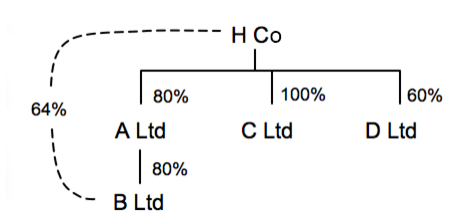Part 2 of 4
This is the Finance Act 2021 version of this article. It is relevant for candidates sitting the ATX-UK exam in the period 1 June 2022 to 31 March 2023. Candidates sitting ATX-UK after 31 March 2023 should refer to the Finance Act 2022 version of this article (to be published on the ACCA website in 2023).
In Part 1 of this article we reviewed the definitions of a group relief group and a capital gains group.
The remaining parts of this article examine the tax planning issues relating to group relief groups. This part looks at companies which are resident overseas and how to plan the distribution of losses to members of a group. Throughout this review of tax planning issues, the term ‘losses’ will be used to represent any/all tax attributes that can be surrendered via group relief.
Companies resident overseas
Companies resident overseas are included within a group relief group. However, losses can only be surrendered between companies that are resident in the UK or are resident overseas but have a permanent establishment in the UK. If the H Ltd group were owned by H Co rather than H Ltd, as set out below (where H Co is a company resident and trading outside the UK and the European Union), the members of the group relief groups would not change. However, losses could only be surrendered between A Ltd and C Ltd and between A Ltd and B Ltd.
Figure 1: The structure of the H Co group of companies

Planning the distribution of losses to members of the group
There are two factors to take into account when planning the distribution of losses between group members: the amount of tax that can be saved and the timing – ie cash flow of the relief.
The amount of tax that can be saved is always the same, because all companies, regardless of their level of profits, pay corporation tax at the same rate. The one exception to this is where double tax relief is available (see Part 4).
However, there is still the issue of timing and cash flow to consider. There are two aspects to this:
- A trading loss can be carried back (after a current period offset) and deducted from the company’s total profits of the previous 12 months. This is advantageous from a cash flow point of view because it relieves the losses earlier than a surrender via group relief.
- As far as group relief is concerned, losses should be surrendered to companies which are required to pay corporation tax by instalments.
The first objective should be to reduce a company’s augmented profits to the level of the quarterly payments threshold. This will mean that the company is no longer required to pay its tax by instalments.
The second objective should be to surrender losses to any other company which has profits in excess of the quarterly payments threshold as this will reduce that company’s corporation tax liability and, consequently, the quarterly payments required
Conclusion
In the exam you should take care to identify the residence status of companies and the location of any permanent establishments as this will affect the planning opportunities available.
Planning the distribution of losses between group members requires a clear understanding of the cash flow implications of corporation tax payments.
Note: Corporation tax issues are considered in two further articles:
- Corporation tax for ATX-UK
- Corporation tax – Groups and chargeable gains for ATX-UK
Written by a member of the ATX-UK examining team
The comments in this article do not amount to advice on a particular matter and should not be taken as such. No reliance should be placed on the content of this article as the basis of any decision. The authors and ACCA expressly disclaim all liability to any person in respect of any indirect, incidental, consequential or other damages relating to the use of this article.


